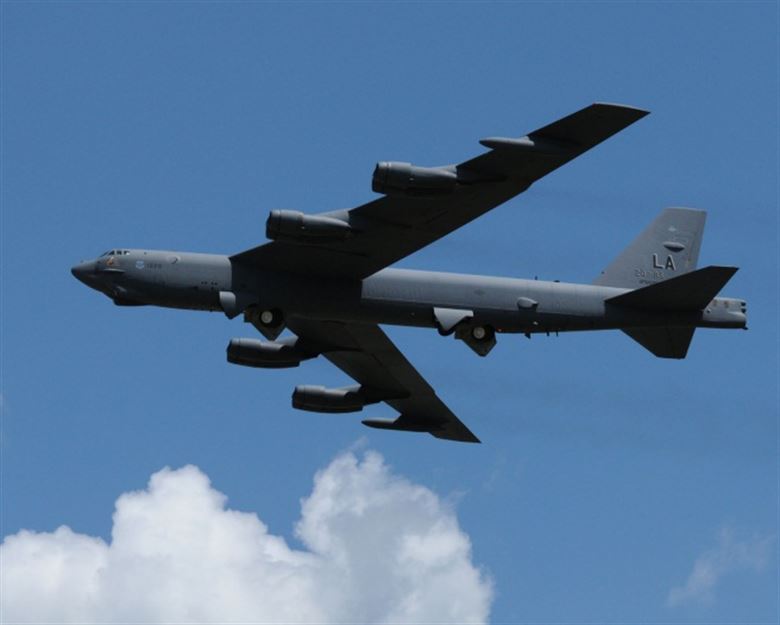
B-52H Stratofortress
WASHINGTON: The Air Force, quietly and somewhat coyly, has chosen Raytheon as the sole-source contractor for development of the Long-Range Standoff Weapon (LRSO) — while at the same time maintaining a relationship with competitor Lockheed Martin to focus on specific “technology maturation” for the program.
The announcement made late Friday by the Air Force Nuclear Weapons Center at Kirtland AFB, took pains to explain that while the decision effectively ends the competition for LRSO design, it does not represent a “down-select per se.”
Instead, it elaborates: “The Air Force previously awarded two contracts for the LRSO Technology Maturation and Risk (TMRR) phase, one to Raytheon and one to Lockheed Martin, in August 2017. After an extensive evaluation of contractor programmatic and technical approach during the TMRR’s preliminary design reviews, the Air Force decided to focus on Raytheon’s design.”
“We are reframing our relationship with Lockheed Martin to focus on specific technology maturation we believe either has future applicability for the final LRSO design or will reduce overall program risk,” added Elizabeth Thorn, AFNWC’s LRSO system program manager.
“The LRSO program office is now developing plans to pivot to a sole-source environment,” the Air Force release continued. “It is also exploring opportunities to redirect funding to critical areas and potentially move some activities into the TMRR phase currently scheduled for the Engineering and Manufacturing Development phase, including flight tests.”
Raytheon offered this in a press release today: “Contract negotiations for the engineering and manufacturing development phase, with a strong focus on schedule realism, affordability, and cost capability trades, will start in fiscal year 2021. The contract award is anticipated in fiscal year 2022.”
So, in other words, Raytheon won the design competition, but it remains slightly uncertain whether it will eventually nab the prime contract to actually build the next-generation cruise missile or be forced to share that with Lockheed Martin (or, who knows, maybe another contractor).
The controversial LRSO is being developed to replace the Air-Launched Cruise Missile (ALCM), carried by B-52 bombers. It is a key part of the Air Force’s high-priority nuclear weapon recapitalization effort. The LRSO has been criticized by key Democratic lawmakers, including House Armed Services Committee Chair Adam Smith, as unnecessary and destabilizing to the US-Russia nuclear relationship.
The Air Force has asked for $474 million for LRSO development in 2021, down from $713 million in 2020.
According to Roman Schweizer, of Cowen Washington Research Group, the service is expected to buy around 1,000 missiles at a cost of about $10 billion. It plans to spend about $2 billion between fiscal 2021 and 2024, Schweizer said in a Cowen “Policy Note” today, “and total development cost is projected at $4.5B.”
Further, he noted that the Air Force and Congress have been discussing potential acquisition of conventionally-armed variants, which means the “market opportunity could be much larger.”
Iran says it shot down Israel’s attack. Here’s what air defense systems it might have used.
Tehran has been increasingly public about its air defense capabilities, including showing off models of systems at a recent international defense expo.


























